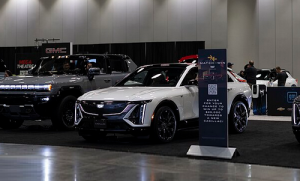Toronto, Ontario — A new European study has found that plug-in electric hybrids (PHEVs) pollute more than acknowledged by policy, and the United States Environmental Protection Agency (EPA) is prepared to give them more lee-way.
The European Commission study showed that new plug-in hybrids registered in 2021 averaged emissions of 139.5 grams of CO2 per kilometre, which was 3.5 times higher than what Europe’s Worldwide Harmonized Light Vehicles Test Procedure (WLTP) regulatory testing protocol indicated.
The real-world emissions of PHEVs are dependent on how often they’re plugged in and driven on electric power, the study noted.
The WLTP testing cycle does try to account for this with a “utility factor” that aims to anticipate distances driven in electric mode. However, it seems that this utility factor has been overestimated.
Previous studies have reached similar conclusions. Notably, a 2022 study from the International Council on Clean Transportation (ICCT) found that real-world electric miles for PHEVs may be up to 65 percent lower than what regulators assume, with fuel consumption up to 67 percent higher. Another study from Transport and Environment in 2020 further noted that PHEVs are polluting more than claimed.
The EPA, citing some of the various pieces of evidence suggesting this low plug-in rate, proposed adjusting for low-electric mileage in PHEVs with its latest emissions regulations—specifically in the form of the Fleet Utility Factor.
However, this implementation has been pushed back. Last week, the EPA said it was delaying the Fleet Utility Factor from the 2027 model year to the 2031 model year “to provide additional stability for the program, and to give manufacturers ample time to transition to the new compliance calculation for PHEVs.”
In 2023, PHEVs hit a record high in the U.S., reaching more than 250,000 sales and accounting for about 20 percent of total plug-in vehicle sales, according to the Department of Energy.
Comparatively, Europe has shifted from internal combustion engine (ICE) vehicles more directly to electric vehicles (EVs), and regulators have considered effectively discouraging PHEVs with policy.































